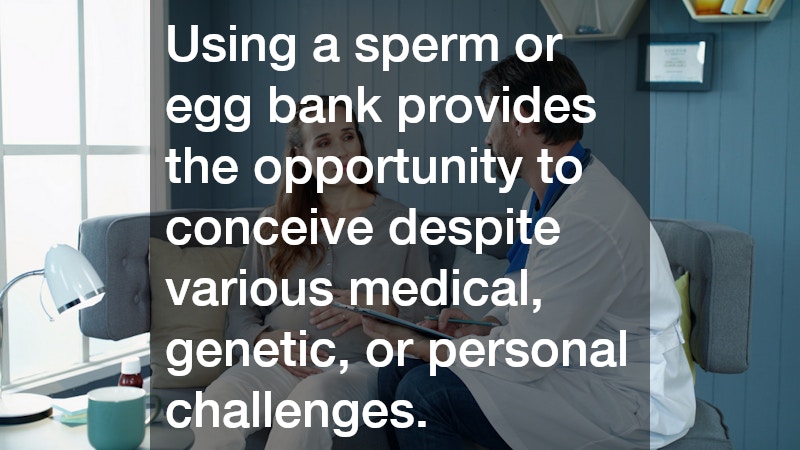Sperm and egg banks, often referred to as semen banks, are specialized facilities that collect, store, and distribute human sperm and eggs, which are crucial for assisted reproductive technologies. These banks play a vital role in helping individuals and couples who experience difficulties with natural conception. The primary function of these banks is to provide a reliable source of sperm and eggs for use in procedures such as in vitro fertilization (IVF) and intrauterine insemination (IUI). As modern families evolve, the demand for these services increases, offering a range of options for people from diverse backgrounds.
Sperm and egg banks have revolutionized reproductive medicine, providing new pathways for family growth.
The process begins with potential donors undergoing a rigorous selection process to ensure the highest quality genetic material. This includes health screenings, genetic testing, and personal interviews to understand the donor’s medical and family history. Once approved, the donations are carefully preserved using advanced cryopreservation techniques, which maintain their viability over extended periods. With the growing technological advancements, these banks have made it possible to store sperm and eggs safely and effectively, ensuring their availability when needed. These efforts ensure that the aspiring parents receive healthy and viable gametes, increasing the chances of successful conception.
For many individuals, using a sperm or egg bank provides the opportunity to conceive despite various medical, genetic, or personal challenges. For instance, cancer patients who may face infertility after treatment have the option to preserve their fertility before undergoing therapy. Likewise, same-sex couples or single parents can also benefit from the services provided by these banks, paving the way for family expansion. As societal norms shift, access to these reproductive resources plays a crucial role in supporting diverse family structures. By offering a range of reproductive materials and services, sperm and egg banks have become essential components of modern reproductive health care.
The Role of Semen Banks in Fertility Treatments
Semen banks form an integral part of fertility treatments, particularly for individuals or couples facing male infertility issues. Male infertility can stem from a variety of factors, including low sperm count, poor sperm motility, or complete absence of sperm. Semen banks provide a solution by offering donor sperm to those who cannot conceive naturally. The process involves carefully selecting donors based on stringent criteria that ensure the genetic quality and health of the donated sperm. By leveraging donor sperm, many families who would otherwise struggle with infertility challenges can achieve their dream of parenthood.
In addition to aiding those with male infertility, semen banks also offer reproductive options for same-sex couples and single women wishing to become parents. For these individuals, sperm donation represents a viable route to achieve pregnancy and start a family. With a wide selection of donors, individuals can choose characteristics that align with their preferences, thus personalizing the reproductive process. Through partnerships with fertility clinics, semen banks facilitate seamless integration into various fertility treatments like IUI and IVF. This coordination between banks and clinics ensures that the journey towards parenthood is smooth and supported at every stage.
The rigorous testing and storage protocols of semen banks offer reassurance and reliability for individuals embarking on fertility treatments. All collected sperm undergo extensive analysis to assess quality and genetic makeup before being approved for use. Once accepted, the sperm are stored in strictly controlled environments, maintaining their viability for future use. These protocols are critical in ensuring that the sperm donations are safe, healthy, and ready to enhance reproductive success. Consequently, semen banks serve as a cornerstone in the landscape of assisted reproductive technologies, providing hope to countless aspiring parents.
Choosing the Right Sperm or Egg Bank
Selecting the right sperm or egg bank is a fundamental step in the process of growing your family through assisted reproductive technology. It involves thorough research and consideration of multiple factors to ensure the best outcome for aspiring parents. One of the primary considerations should be the bank’s reputation and history of successful conceptions. By examining reviews, client testimonials, and success rates, individuals can gauge the reliability and effectiveness of the bank’s services. Opting for a well-established and credible bank increases the chances of a positive and profitable experience.
Another crucial aspect to consider is the range and diversity of the donor pool available at the bank. A diverse selection allows individuals to choose donors based on preferred attributes and values, such as ethnicity, education, hobbies, and personal interests. This option to customize reproductive material ensures a connection and continuity with one’s desired family structure. Furthermore, banks with robust screening processes assure the quality and health of donor sperm and eggs, thus safeguarding against potential genetic issues. By taking these factors into account, individuals can confidently proceed in their journey to parenthood.
Lastly, logistical considerations such as location, affordability, and support services should influence the decision-making process. Proximity to the chosen bank can ease the logistical burden and enhance communication during the selection and treatment stages. Additionally, understanding the cost structure and any associated legal considerations related to donor sperm or eggs is essential. Many banks offer counseling and support services to assist individuals in navigating the emotional and psychological aspects of utilizing a sperm or egg bank. By aligning with a bank that offers comprehensive support, individuals can make informed decisions that best suit their reproductive goals.

